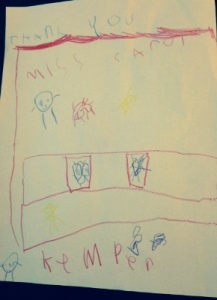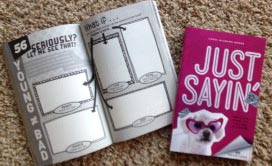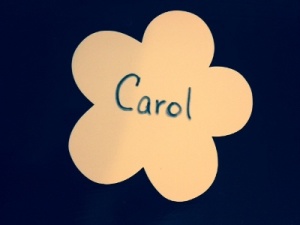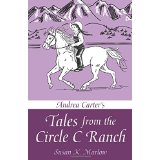Reading, Drawing, and Summer Reading Programs
As I write this, I have the windows open in my office. It isn’t summer yet, but summer is surely just around the corner. If you are a parent, a grandparent, or the caregiver of a child, I am sure that you have been busy planning for summer activities.
Summer Reading Clubs were a huge part of my summer activities as a child. I remember getting a little booklet at the library. The purpose of the booklet was to have a place to record a few things about each book I read: title, author, summary, and what I liked about the book. I also got a construction paper shape that would move one more space around the room with each book I read.
Some children enjoy writing about what they have read.
Other children are too young to actually write their thoughts. Recently, I had the pleasure of reviewing Words to Dream On by Diane Stortz. After I completed the review, I passed the book along to a friend’s preschooler.
Here is the sweet thank you picture she sent to me. (Amazing penmanship for a preschooler – right?) I loved the thoughtful thank you. I also loved the content of the drawing. Do you see the rectangular shape? She explained to her mom that was the “boat” (ark). See the animals? The artist was thinking about what she had learned from the cover and the stories in the book. She was using drawing, not only to express her thanks, but to show what she had learned.
she sent to me. (Amazing penmanship for a preschooler – right?) I loved the thoughtful thank you. I also loved the content of the drawing. Do you see the rectangular shape? She explained to her mom that was the “boat” (ark). See the animals? The artist was thinking about what she had learned from the cover and the stories in the book. She was using drawing, not only to express her thanks, but to show what she had learned.
Do you want to know what else I love about this drawing? If you look at the cover of Stortz’s book that will be released in July, you will notice the label of “boat” on the ark. I would say that Stortz really speaks the language of her young readers.
Sometimes, the reader/artist is not a preschooler.
Perhaps that child is just talented at drawing.
Still others are old enough to write and may not be artistically inclined, but they p rocess information better if they can draw something about it. Let’s face it, you can’t really draw something unless you have thought the written message. My devotionals for preteens have many opportunities for drawing. The reader is given a Scripture
rocess information better if they can draw something about it. Let’s face it, you can’t really draw something unless you have thought the written message. My devotionals for preteens have many opportunities for drawing. The reader is given a Scripture passage and a question or situational prompt that requires a journal-type response or a drawing.
passage and a question or situational prompt that requires a journal-type response or a drawing.
Of course, a child can draw about what he or she understands about a fiction book. Maybe the drawing(s) will show a certain scene, an order of events, or even how the child would extend the story to tell what happens after the printed words are finished. For example, Susan Marlow’s books are great for young readers who love horses. The stories would lend themselves well to such writing activities.
Has your child drawn something that shows his or her understanding of a book? If so, I hope you will share it with us.
And – by the way – is your child signed up for a summer reading program?
Many blessings on you and your family as you plan for summer.
Carol




Comments
Reading, Drawing, and Summer Reading Programs — No Comments
HTML tags allowed in your comment: <a href="" title=""> <abbr title=""> <acronym title=""> <b> <blockquote cite=""> <cite> <code> <del datetime=""> <em> <i> <q cite=""> <s> <strike> <strong>